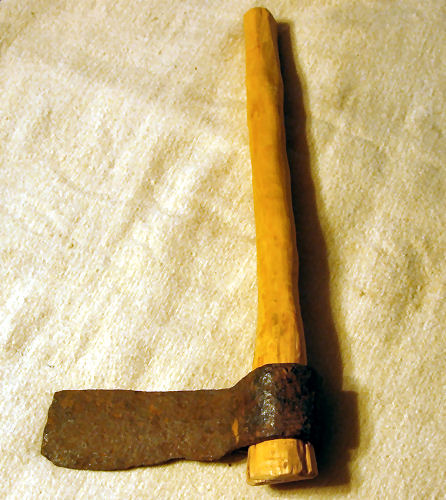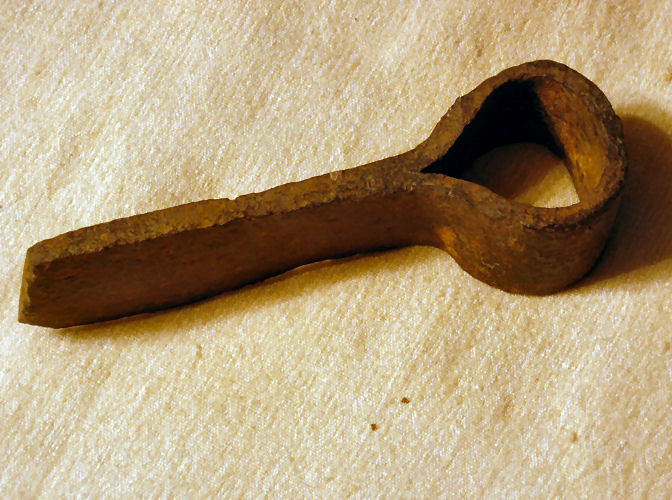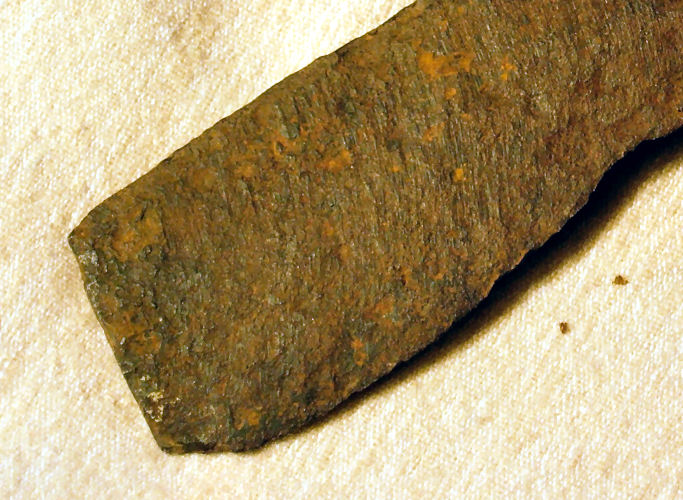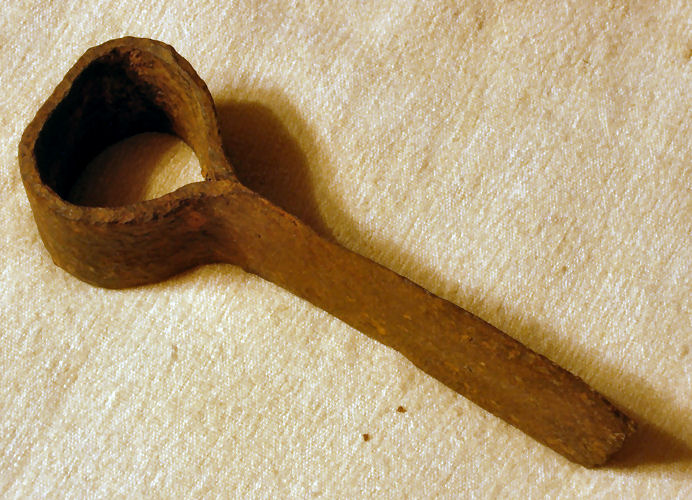

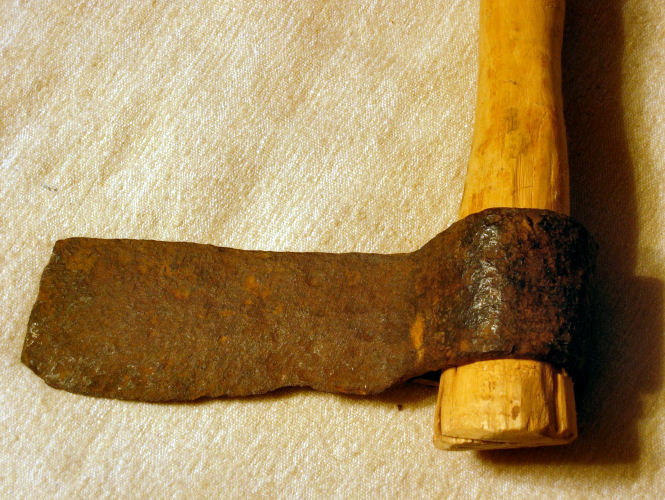
| The froe (variously spelled frow) was a tool used to split wood to make shingles, clapboards, staves and other thin, flat boards. It was essentially a wedge and used as such. The tool has a sharp, or knife edge, aimed at a ninety degree angle away from the handle, and an opposite thick edge. The purpose of the thick edge is to permit the tool to be struck with a wooden mallet. The woodworker would set a short block of wood upright on the floor or low bench. The froe would then be positioned with its knife edge resting on the top of the block of wood on the line desired to be cut. The tool was generally not used to split a log down the middle, but rather to slice off thin slabs. Holding the froe's handle with one hand, the woodworker would grab a wooden mallet with the other hand, and with a downward swipe, strike the thick upper edge of the froe. The striking of the froe with the mallet would force the knife edge downward into the block of wood, causing it to begin splitting. The woodworker would twist the froe handle to increase the size of the crack being formed along the grain. And if the froe blade's length was longer than the depth of the wood block, as the crack widened, the tip of the blade would be repeatedly struck with downward strikes of the mallet, forcing it farther and farther into the wood, until the slab would be sliced off. The froe exhibited on this page has a new handle, but it is very similar to the one the tool would have had originally: short and straight. Since the purpose of the handle was to position and steady the blade in preparation of it being struck with the mallet, the handle did not need to be curved. Also, the blade of this particular froe is somewhat short, being only six inches in length from the handle to the tip. The thick edge measures about one-half inch. This froe, made of wrought iron, possibly dates to the late 1700s. A blacksmith would have made it by folding a piece of iron around a steel handle pattern, hammering the two heated edges together until they welded together, and then hammering the combined 'blade' into the long knife edge shape. The seam where the two edges welded together is barely noticeable. |
